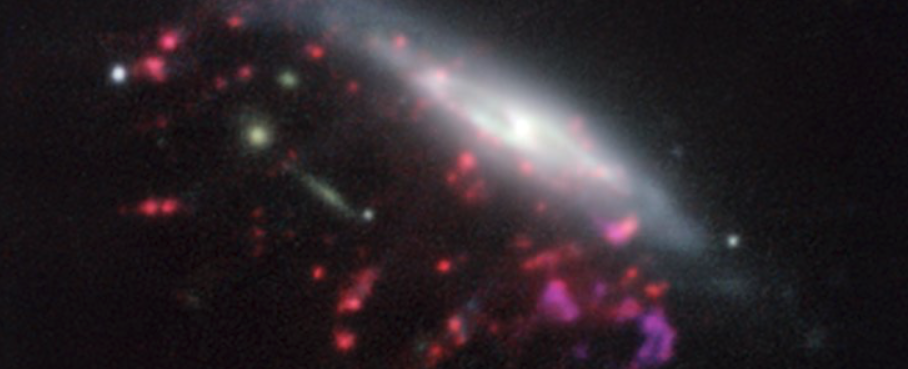
Example of a Jellyfish galaxy.
Credit: ESO
An open question in Astrophysics is why only a small fraction of Supermassive Black holes (SMBHs) at the centre of galaxies are active. A new study now reveals a previously unknown mechanism by which black holes can be triggered.
Astronomers used the MUSE instrument on the Very Large Telescope (VLT) at ESO’s Paranal Observatory in Chile to study how gas can be stripped from galaxies. For that purpose, they observed jellyfish galaxies in nearby galaxy clusters. Jellyfish galaxies are named after the long “tentacles” of material that extend for tens of thousands of light-years beyond their galactic discs. They found that six out of the seven jellyfish galaxies in their study host an active SMBH, a fraction that is remarkably high compared to less than one in ten, among galaxies in general. They concluded that some of the gas reaches the galaxy centre, rather than being removed. Their observations suggest a novel mechanism for gas to be funneled towards the black hole. The result is important as it provides a new piece in the puzzle of the poorly understood connections between SMBHs and their host galaxies.
The current study is part of an ongoing work that when completed will reveal how many of the gas-rich galaxies that enter clusters go through an active stage, a key question towards our understanding of how galaxies form and evolve during cosmic time.
Publication: Poggianti et al. 2017
Source: ESO
